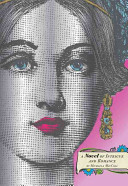
In this graphic depiction of nuclear devastation, three survivors of the bombing of Hiroshima–Gen, his mother, and his baby sister–face rejection, hunger, and humiliation in their search for a place to live.
Historical Fiction genre

In this graphic depiction of nuclear devastation, three survivors of the bombing of Hiroshima–Gen, his mother, and his baby sister–face rejection, hunger, and humiliation in their search for a place to live.

A young boy in ancient times embarks on an adventurous sea voyage to Alexandria, Egypt, home of the famous Pharos Lighthouse.

Nina and her father live in a beautiful riding school famous for their Lippizaners–precious, rare performing horses. Nina loves the horses that her father looks after, but she also loves Zelda, one of the old carriage horses who she sneaks out to see. It’s a perfect world for a little girl, although she has to compete with her father’s work for his attention. But a war is coming, one that will threaten their lives and the very existence of the school. When the city is under attack, Nina and Father are in charge of fleeing with the horses to a safe place across the border, but can they pass enemy soldiers, bombed out bridges and the fearsome cold of the Alps to get there? And can Nina save her beloved Zelda, too?

Chosun Dynasty had a wise King Sejong. When a humble servant boy tells of his longing to read and write, King Sejong sets out to create a simple yet beautiful way to write the Korean language. The people reject the new way of writing–until the boy gives the king another grand idea.

A loaded gun, stolen gold, and a menacing stranger. A taut frontier survivor story, set at the time of the Alaska gold rush. In an isolated cabin, fourteen-year-old Sig is alone with a corpse: his father, who has fallen through the ice and frozen to death only hours earlier. Then comes a stranger claiming that Sig’s father owes him a share of a horde of stolen gold. Sig’s only protection is a loaded Colt revolver hidden in the cabin’s storeroom. The question is, will Sig use the gun, and why?

Recently orphaned and destitute, seventeen-year-old Liza Hastings earns a position as a lady’s maid to sixteen-year-old Princess Victoria at Kensington Palace in 1836, the year before Victoria becomes Queen of England.

In 1945 Russia, those who own German shepherds are considered traitors, but thirteen-year-old Mikhail and his family are determined to keep the dog a dying man brought them, while his classmate Katia strives to learn his secret.
See the review at WOW Review, Volume 4, Issue 3
Sensei Ki-yaga leads Niya and the other students of the Cockroach Ryu on a journey to beg the feudal Emperor to stop war from breaking out between the mountain ryus, putting to the test the firm friendship and unusual skills of these physically-disabled samurai-in-training.

An eleven-year-old girl is sent to her grandmother’s village for an arranged marriage, and tries every method she can think of to escape her fate.
In China in the 1940s, ten-year-old Ying sells her handmade bamboo chicken fences to make money to attend a school camping trip, but no one understands why she instead uses her earnings to buy a dead hen from the grandmother of a drowned classmate.